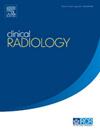介入放射学中的局部麻醉:放射科医师的应用和并发症处理入门
IF 1.9
3区 医学
Q2 RADIOLOGY, NUCLEAR MEDICINE & MEDICAL IMAGING
引用次数: 0
摘要
局部麻醉(LAs)通过改善患者舒适度和减轻疼痛,可以在介入放射学(IR)中进行一系列手术。这篇综述作为介入放射科医生的入门读物,提供了常用的LAs的概述和实施的实用技巧。由于起效时间快,作用时间适中,酰胺利多卡因是最常用的,适用于多种手术,如活检和栓塞。相比之下,布比卡因和罗哌卡因(两种酰胺)的作用持续时间较长,因此适用于冗长的手术和术后疼痛控制。普鲁卡因是一种酯类药物,可用于酰胺类麻醉剂过敏的病例。本文综述了LAs在放射学中的临床应用及其不良反应的处理,包括局部麻醉全身毒性(LAST)和过敏反应。最后讨论了LAST,强调了早期干预和管理的技术。脂质乳剂治疗的作用和对高级心脏生命支持(ACLS)方案的修改被强调,包括对其他方面的讨论,如气道管理。通过介绍最新的策略来管理最后和不良反应,本研究旨在帮助标准化麻醉管理放射学。它为选择和注射麻醉剂以及并发症的处理提供了可操作的步骤,这将有利于介入放射科医生进行各种各样的手术。本文章由计算机程序翻译,如有差异,请以英文原文为准。
Local anaesthetics in interventional radiology: a primer for radiologists on applications and management of complications
Local anaesthetics (LAs) allow a range of procedures to be performed in interventional radiology (IR) through improving patient comfort and reducing pain. This review serves as a primer for interventional radiologists, providing an overview of commonly used LAs and practical tips for their implementation. With its quick onset time and moderate duration of action, the amide lidocaine is the most used and applicable to a variety of procedures such as biopsies and embolization. In contrast, bupivacaine and ropivacaine (both amides) have longer durations of action, and are therefore suitable for lengthy procedures and pain control post-procedurally. Procaine, an ester, may be used in cases of amide anaesthetic allergies. This review examines the clinical applications of LAs in radiology and management of their adverse effects including local anaesthetic systemic toxicity (LAST) and allergic reactions. It concludes with a discussion of LAST, emphasising techniques for early intervention and management. The role of lipid emulsion therapy and modifications to the advanced cardiac life support (ACLS) protocol are highlighted, including a discussion of other aspects such as airway management. By presenting the latest strategies to manage LAST and adverse effects, this research aims to help standardise anaesthetic management in radiology. It provides actionable steps for selecting and injecting anaesthetics, and management of complications that will be beneficial for interventional radiologists performing a diverse array of procedures.
求助全文
通过发布文献求助,成功后即可免费获取论文全文。
去求助
来源期刊

Clinical radiology
医学-核医学
CiteScore
4.70
自引率
3.80%
发文量
528
审稿时长
76 days
期刊介绍:
Clinical Radiology is published by Elsevier on behalf of The Royal College of Radiologists. Clinical Radiology is an International Journal bringing you original research, editorials and review articles on all aspects of diagnostic imaging, including:
• Computed tomography
• Magnetic resonance imaging
• Ultrasonography
• Digital radiology
• Interventional radiology
• Radiography
• Nuclear medicine
Papers on radiological protection, quality assurance, audit in radiology and matters relating to radiological training and education are also included. In addition, each issue contains correspondence, book reviews and notices of forthcoming events.
 求助内容:
求助内容: 应助结果提醒方式:
应助结果提醒方式:


